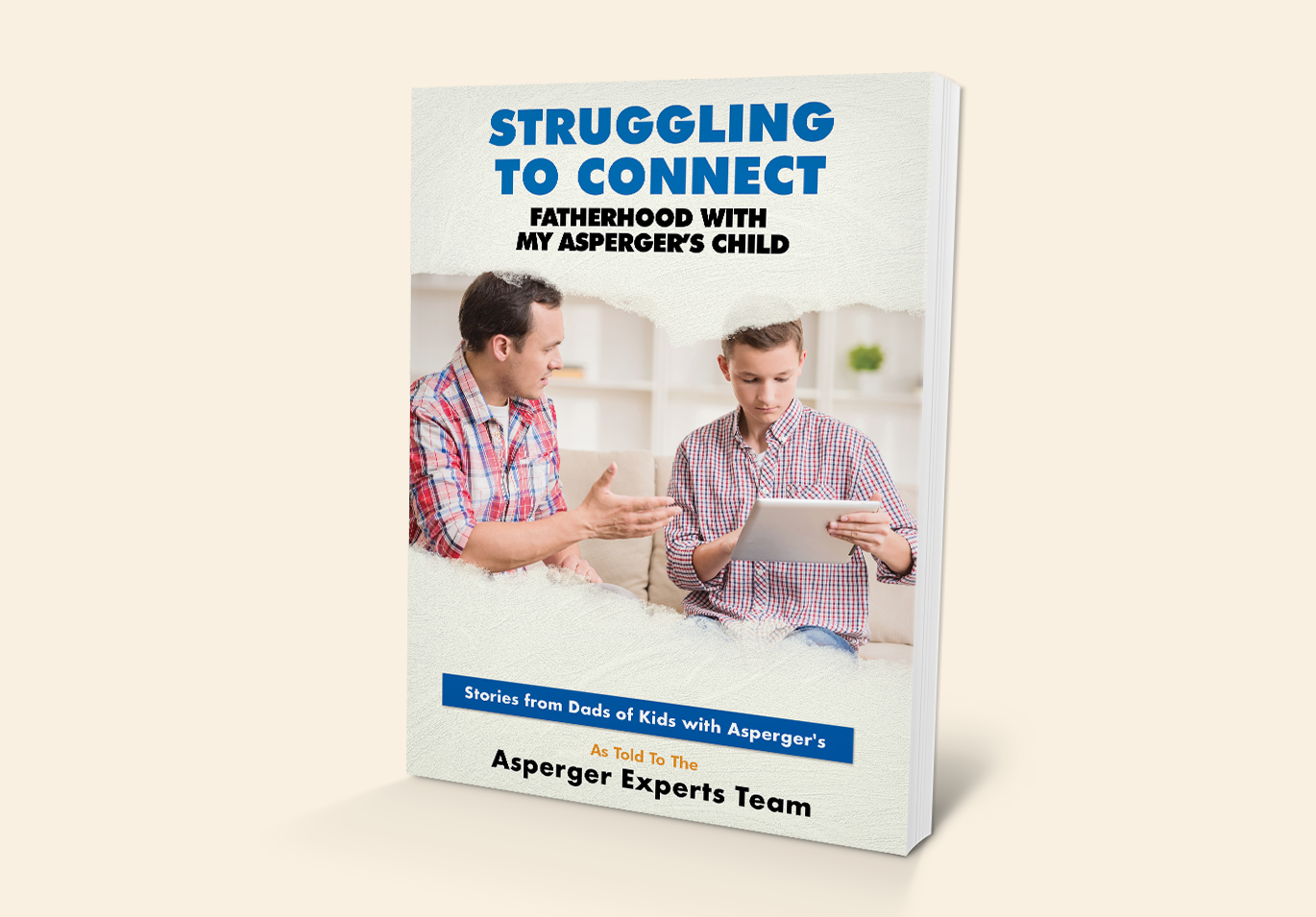Parenting 4 Steps To Building Trust With Your Autistic Spectrum Child

The AE Team
Adrian took another bite of her hamburger and as soon as she finished chewing, she immediately resumed her excited chatter about her latest obsession, anime cartoons. Her mother Margaret continued to listen, politely thrilling in the fact that her daughter was actually talking openly. Finally, a real conversation! For the past few weeks Adrian rarely, if ever left her room. She often refused to join the family for dinner, preferring to spend most of her time alone on her computer. As a result, Margaret had barely seen, much less spoken to her daughter for almost four weeks, which is why Margaret had decided to pick Adrian up from school today and take her out to lunch, resolving to finally spend some proper time together. Rebuild that emotional bank account as it were. So far, the plan seemed to be working beautifully.
The conversation was flowing smoothly and Adrian was smiling and relaxed out of Defense Mode at last. Then suddenly Margaret remembered that she'd been meaning to talk to her daughter about her failing grade in math class, but she hadn't broached the topic yet out of fear that Adrian would overreact. After all trying to have a productive conversation with someone deep in Defense Mode is a formidable task, but now things were different. Adrian was happy, relaxed and out of Defense Mode. So perhaps now a productive conversation about math class might actually be possible right? Margaret cleared her throat and said, "Adrian, I've been meaning to ask you something." "Yeah, mom," "I looked at your grades recently and I noticed that you have a D in math. I'm a little concerned so I'd like to figure this out together. What's going on there?" Adrian's smile vanished as she leaned back in her chair. She crossed her arms, pursed her lips and stared down at her half eaten plate of food, refusing to make eye contact. "I don't know. It's none of your business. Just leave it alone. Okay." Margaret sighed heavily, Adrian was back in Defense Mode.What went wrong?
Think of your relationship with your child as having a sort of shared emotional bank account. To borrow an analogy described by Dr. Stephen Covey in his book "The Seven Habits of Highly Effective People", every single day through your words and actions you either make deposits into the account building trust, safety, and positive emotions, or you make withdrawals creating uncertainty and negative emotions. Simply put positive actions, put money into the account and strengthen the relationship. Negative, hurtful actions take money out of the account, damaging the relationship and diminishing trust. For every metaphorical dollar taken out of the relationships account through nagging and argument, failing to keep a commitment or any other negative experience, a subsequent positive action like apologizing, playing a fun game together, or giving them a hug will only add 20 cents back in. For every negative action, you need at least five positive ones to balance it out.So think about all of the interactions you and your child have had during the past month. Does the number of shared positive experiences vastly outnumber the negative ones? What about during the past six months, the past year? Over time, if there hasn't been a steady stream of positive trust-building moments to balance out all the nagging and arguments, then your shared emotional bank account might be in the red. If so, then to help your child get out of Defense Mode, it is absolutely essential that you build up a strong positive balance in your shared emotional bank account. So how do you actually go about doing that?
Before you can successfully make a withdrawal from your emotional bank account, like having a difficult conversation about a failing grade in math class, you first need to make sure that you have a sufficient positive balance in the account. Communication is an essential ingredient for any successful relationship. Sometimes things just need to be discussed even when they're difficult or uncomfortable. However, despite her good intentions and desire for open communication, Margaret made a mistake. This was the first time in weeks that she and Adrian were able to have a positive, trust-building interaction and one positive lunchtime experience is not enough to balance out weeks of negative or even non-existent interaction. Thus, when Margaret brought up Adrian's D in math class, she attempted to make a withdrawal from the relationship account while it was still deep in the red. Trust comes from the old Norse word Treysta meaning to rely on to make strong or safe. In other words, if you trust someone, it's because you feel you can rely on them. So how do we create trust if it's nonexistent, or rebuild it if it's been damaged? Interaction is the only way to build trust in your relationship with your son or daughter or anyone else for that matter. Plain and simple. You've got to talk, spend time together. Call them on the phone, write them an email, send smoke signals, whatever. However, not just any interaction will do the trick. Restoring the emotional bank account requires you to follow four specific criteria. We call these the four pillars of trust. For an interaction to be trust-building, it must have all four of these characteristics. If all four are present, then it's only a matter of time before you succeed in building trust. On the other hand, if even one of these four pillars is missing, then it won't work.Pillar Number One: Frequent
It's rather difficult to have a close trusting relationship with someone you rarely talk to. You may love your great uncle Rudolf, but you only see him once a year at the Christmas party, so he's probably not the person you're going to call if you're having a rough day and really need some emotional support. By that same logic, if you want to have a closer, more trusting relationship with your child, then you may need to increase the frequency of your interactions with them.
Pillar Number Two: Low Risk
When Margaret brought up Adrian's failing grade in math class, it immediately made that interaction high risk. Normally that would be fine if they had a really solid emotional bank account that could take a hit like that, but they didn't. That day in the restaurant was the first proper conversation they'd had in weeks. So of course, Adrian went back into Defense Mode immediately. Not to say that you can't ever have high risk, difficult conversations. Just make sure that you carve out a separate time and space for having those intense discussions. Then outside of those dedicated times, don't bring up those emotional topics. Most of the time just enjoy being with each other.
Pillar Number Three: Intimate
Now I'm not saying you have to be your child's therapist or bare your souls to one another, telling each other your deepest, darkest secrets. I'm just saying that for your interactions to be trust-building, they have to go a step beyond those social scripts you use with strangers at the grocery store. Frankly, it doesn't really matter what you talk about. Video games, sports, last night's TV show, what you did last weekend. Just try to go off script more often and make your interactions about something a little more personal and real. Otherwise, if most of your interactions center around things like taking out the trash and what time dinner is, then it's unlikely that you and your child will develop that extra special bond where they feel completely safe and comfortable talking to you about anything.
Pillar Number Four: Positive
Every interaction you have with your child doesn't have to be smiles and rainbows all the time, but a little extra effort and creativity can go a long way towards making even the boring, mundane moments into positive trust-building experiences. For example, if you need to ask Johnny to take out the trash, instead of just shouting up the stairs, you could walk up to his room and state your request with a smile and a preemptive thank you. Or depending on Johnny's age, perhaps you could make a game out of it. You might say, "I'll take the upstairs trash and you take the downstairs, whoever finishes first wins. Let's see how fast you can go." Games like this can work great with younger children, but we don't recommend trying it with your teenager. They'll probably just feel insulted.
Day to day, things still need to get done. But positivity, fun, and effectiveness don't have to be mutually exclusive. So whatever the goal or situation is, try to look for the 'and.' I wonder how Johnny and I can take out the trash tonight and have a positive experience doing it. Get creative and have fun. Crack a joke, give a compliment, collaborate and ask questions. Offer a hug or even smile. Who knows? They just might smile back. So there you have it. The four pillars of trust. If you like acronyms, then an easy way to remember them is Flip. F, L, I. P. frequent, low risk, intimate, positive interactions. That's how you create safety. That's how you create trust. That's how you create connection.
Join Our Email List
Get advice, scripts, stories and more sent directly to your email a few times a week.
Read Next

The AE Community
Books & Courses Related To This
View all productsGreat For Dads
Great For Parents
Great For Parents
Great For Reducing Overwhelm






